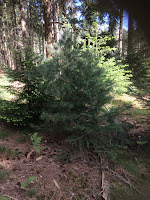Help - I need to write a blurb! By Annie Try
I have a mentor for my latest WiP – which is a novelty for me. I sent him my manuscript so far and just before our first meeting he asked me to send him a short summary of my book, the sort of thing that might appear on a back cover, before we spoke.
But a good blurb takes a long time to write, doesn’t it? Condensing a book, even a short one, into a really concise paragraph or two is an art form in itself. I did send him something – but I hope it never goes on the back cover of the book because it is extremely dull.
So what, usually, is the purpose of the text on the back of a book? If the title is the first thing a potential reader sees, the blurb is often a close second. It follows that it needs to be unique, interesting, attention grabbing and at the same time truly reflect the nature of the book. But on the other hand, it has to appeal to the right audience for the subject matter. So if I were writing a populist book on quantum physics (which I am not!) it might be feasible to start with a statement like ‘Items passing through walls and other strange facts about quantum physics to blow your mind’. Whereas, a more specialist book might be far more factual. I can’t write that one! I’d need a degree in the right subject to do so. Which reminds me that a non-fiction book often contains a reference to the author’s credentials within the blurb, to establish their expertise.
What do you think a blurb should contain? It needs to give enough of the story to help the reader know what they are letting themselves into, before embarking on the journey through 85000 or so words. But not the whole story. If you were to think of the whole story as a pine forest – the tall trees being themes and characters and tales reaching up to the sky, then a blurb could be likened to a few
densely clustered young trees of the same type. They are able to show they are pine trees, giving the flavour of what is to come. In the same way a short, full piece of text aims to point the reader to the kind of book and the final tale. If the story is based in a particular period of time, or around a known character, or indeed a bible story, then it is helpful to indicate that in the blurb.
I like questions in my blurbs, which are usually written in collaboration with my publisher. In the photo below I have shown the back cover of my most recent novel. You’ll see the blurb is quite long but shows the way the story develops without giving too much away. The use of questions at the end aims to create enough intrigue to help the reader to want to know more.
But do they? Who knows – but it sort of displays something of me, the author. Because whenever I write a blog or a little piece, I include questions, don’t I?
Annie Try is the creator of four novels, three of them are Dr Mike Lewis Stories. Trying to Fly and Out of Silence were published in 2017 and Red Cabbage Blue was out in September 2019. She is now working on a non-fiction book, to help Christians come closer to God using their imaginations.



I've only ever written one blurb and that was at an ACW Writers' Day. I'd tried and failed many times before, but in a room full of writers with Sarah Grace up the front, I got the help I needed. I included questions in mine. It's so difficult, as you say, much harder than writing the book in the first place!!
ReplyDeleteIn my experience, the publisher writes the blurb, but things may have changed since I last had a book out (which is rather a long time...)
ReplyDelete